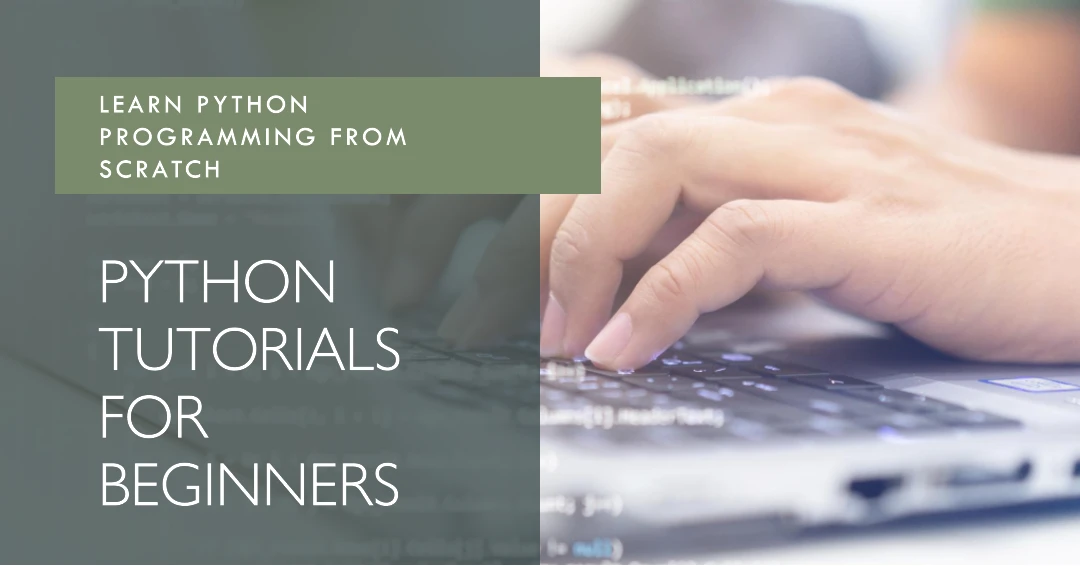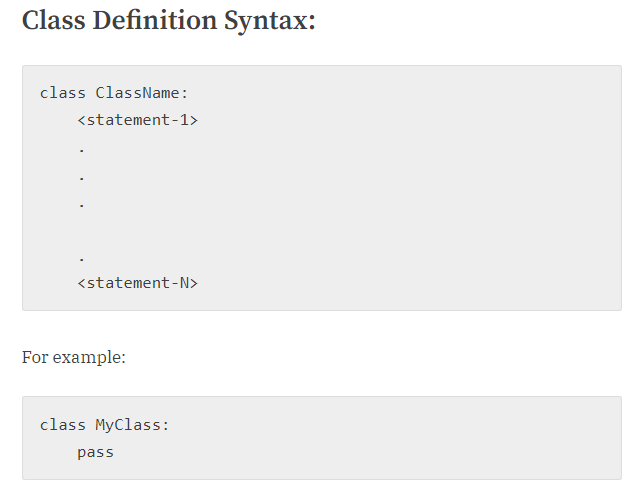
Mastering Python Programming: A Comprehensive Guide
Python, an immensely popular programming language, has become a staple in the world of software development, data science, and web development. Its simplicity, readability, and versatility make it an excellent choice for both beginners and experienced developers. This comprehensive guide aims to provide you with a structured approach to mastering Python, covering everything from the basics to advanced concepts and practical applications.
Getting Started with Python
Introduction to Python and Its Applications
Python is a high-level, interpreted programming language known for its ease of use and readability. It supports multiple programming paradigms, including procedural, object-oriented, and functional programming. Python’s versatility allows it to be used in various domains such as web development, data analysis, artificial intelligence, scientific computing, and automation.
Setting Up the Python Development Environment
To begin your Python journey, you need to set up the development environment. Start by installing the latest version of Python from the official website. Once installed, you can use an Integrated Development Environment (IDE) like PyCharm, Visual Studio Code, or even a simple text editor like Sublime Text. These tools provide useful features like syntax highlighting, code completion, and debugging.
Writing Your First Python Program
Let’s write a simple Python program to ensure everything is set up correctly. Open your IDE or text editor and type the following code:
print("Hello, World!")Save the file with a .py extension, for example, hello.py, and run it using the command line:
python hello.pyIf everything is set up correctly, you should see the output: Hello, World!
Fundamental Python Concepts
Variables and Data Types
In Python, variables are used to store data, and you don’t need to declare their type explicitly. Python supports various data types, including integers, floats, strings, lists, tuples, dictionaries, and sets.
age = 25
name = "John"
height = 5.9
is_student = TrueControl Flow: If Statements and Loops
Control flow statements allow you to control the execution of your code based on certain conditions. The if statement is used to execute a block of code if a condition is true. Loops, such as for and while, enable you to execute a block of code multiple times.
# If statement
if age > 18:
print("Adult")
# For loop
for i in range(5):
print(i)
# While loop
count = 0
while count < 5:
print(count)
count += 1Functions and Modules
Functions are reusable blocks of code that perform a specific task. You can define your own functions using the def keyword. Modules are files containing Python code that can be imported and used in other Python programs.
# Function definition
def greet(name):
return f"Hello, {name}!"
# Function call
print(greet("Alice"))
# Importing a module
import math
print(math.sqrt(16))Intermediate Python Skills
Exception Handling
Exception handling is crucial for writing robust programs. It allows you to manage errors gracefully without crashing the program. Use try, except, else, and finally blocks to handle exceptions.
try:
num = int(input("Enter a number: "))
result = 10 / num
except ValueError:
print("Invalid input!")
except ZeroDivisionError:
print("Cannot divide by zero!")
else:
print("Result:", result)
finally:
print("Execution completed.")Test This: Online Python Editor
Object-Oriented Programming (OOP) Concepts
Object-oriented programming is a paradigm that organizes code into objects, which are instances of classes. Python supports OOP with features like inheritance, polymorphism, and encapsulation.
class Person:
def __init__(self, name, age):
self.name = name
self.age = age
def display(self):
print(f"Name: {self.name}, Age: {self.age}")
# Creating an object
person1 = Person("Bob", 30)
person1.display()Working with Modules and Packages
Modules and packages help in organizing your code into manageable and reusable components. A module is a single file, whereas a package is a collection of modules.
# mymodule.py
def add(a, b):
return a + b
# main.py
import mymodule
print(mymodule.add(5, 3))Advanced Python Programming
Generators and Decorators
Generators allow you to create iterators in a more memory-efficient way using the yield keyword. Decorators are functions that modify the behavior of other functions.
# Generator example
def fibonacci(n):
a, b = 0, 1
while a < n:
yield a
a, b = b, a + b
for num in fibonacci(10):
print(num)
# Decorator example
def my_decorator(func):
def wrapper():
print("Something is happening before the function is called.")
func()
print("Something is happening after the function is called.")
return wrapper
@my_decorator
def say_hello():
print("Hello!")
say_hello()File Handling: Reading and Writing CSV Files
Handling files is a common task in Python. You can read from and write to files using built-in functions.
import csv
# Writing to a CSV file
with open('data.csv', mode='w', newline='') as file:
writer = csv.writer(file)
writer.writerow(['Name', 'Age'])
writer.writerow(['Alice', 28])
writer.writerow(['Bob', 25])
# Reading from a CSV file
with open('data.csv', mode='r') as file:
reader = csv.reader(file)
for row in reader:
print(row)Understanding Python’s Memory Management
Python handles memory management automatically using reference counting and garbage collection. Understanding how memory is managed helps in writing more efficient code.
# Example to understand reference counting
a = [1, 2, 3]
b = a
print(id(a), id(b)) # Both variables point to the same memory location
b.append(4)
print(a) # Changes in 'b' are reflected in 'a'Practical Python Applications
Data Manipulation with Libraries like Pandas and NumPy
Python is widely used for data analysis and manipulation. Libraries like Pandas and NumPy provide powerful tools for handling data.
import pandas as pd
import numpy as np
# Creating a DataFrame
data = {'Name': ['Alice', 'Bob', 'Charlie'],
'Age': [24, 27, 22]}
df = pd.DataFrame(data)
print(df)
# NumPy array
arr = np.array([1, 2, 3, 4])
print(arr * 2)Web Development with Django and Flask
Django and Flask are popular web frameworks for building web applications. Django follows the “batteries-included” philosophy, providing everything you need out of the box, while Flask is more lightweight and flexible.
# Flask example
from flask import Flask
app = Flask(__name__)
@app.route('/')
def home():
return "Hello, Flask!"
if __name__ == "__main__":
app.run(debug=True)Automating Tasks with Python
Python can be used to automate repetitive tasks, saving time and reducing errors. For example, you can use the os module to automate file operations.
import os
# Renaming files in a directory
def rename_files(directory):
for filename in os.listdir(directory):
new_name = filename.lower().replace(' ', '_')
os.rename(os.path.join(directory, filename), os.path.join(directory, new_name))
rename_files('/path/to/your/directory')Best Practices in Python
Writing Efficient and Readable Code
Writing clean and efficient code is essential for maintainability and performance. Follow the PEP 8 guidelines for code style and use meaningful variable names.
# Example of clean and readable code
def calculate_area(radius):
"""Calculate the area of a circle given its radius."""
import math
return math.pi * radius ** 2
print(calculate_area(5))Debugging and Testing: Using Unit Tests
Testing your code ensures it works as expected and helps catch bugs early. Python’s unittest module provides a framework for writing and running tests.
import unittest
def add(a, b):
return a + b
class TestMathOperations(unittest.TestCase):
def test_add(self):
self.assertEqual(add(2, 3), 5)
self.assertEqual(add(-1, 1), 0)
if __name__ == '__main__':
unittest.main()Version Control with Git
Version control is crucial for managing changes to your codebase. Git is a popular version control system that helps track changes, collaborate with others, and revert to previous versions if needed.
# Basic Git commands
git init # Initialize a new Git repository
git add . # Stage all changes
git commit -m "Initial commit" # Commit the changes
git push origin main # Push the changes to the remote repositoryEnhancing Your Python Skills
Participating in Open Source Projects
Contributing to open-source projects is a great way to improve your skills, learn from others, and give back to the community. Websites like GitHub host numerous projects you can contribute to.
Contributing to Python Documentation
Improving Python’s documentation helps others understand how to use the language and its libraries. You can contribute by writing tutorials, fixing typos, or adding examples.
Learning from Code Reviews
Code reviews are an excellent way to learn from experienced developers. Reviewing others’ code and receiving feedback on your own code helps you improve your coding practices and learn new techniques.
Utilizing Python Libraries
Overview of Popular Python Libraries
Python’s extensive library ecosystem makes it powerful for various tasks. Some popular libraries include:
- Pandas for data analysis
- NumPy for numerical computing
- Matplotlib and Seaborn for data visualization
- Requests for making HTTP requests
- BeautifulSoup for web scraping
Using Libraries for Specific Tasks: Data Analysis, Web Scraping, etc.
Leveraging Python libraries can significantly simplify complex tasks. For example, using BeautifulSoup for web scraping:
from bs4 import BeautifulSoup
import requests
url = 'https://example.com'
response = requests.get(url)
soup = BeautifulSoup(response.text, 'html.parser')
for link in soup.find_all('a'):
print(link.get('href'))Building and Sharing Your Own Python Libraries
Once you become proficient in Python, you might want to create and share your own libraries. Use tools like setuptools to package your library and upload it to PyPI (Python Package Index).
# Example of a simple library
def greet(name):
return f"Hello, {name}!"Continuous Learning and Improvement
Also Read: The Top 10 Best Online Python Courses for Beginners
Online Resources and Communities
There are numerous online resources and communities where you can learn and seek help:
- Stack Overflow for asking and answering questions
- Reddit and Quora for discussions
- Coursera, edX, and Udemy for online courses
- YouTube for video tutorials
Keeping Up with Python Updates
Python is continuously evolving, with new features and improvements being added regularly. Follow the official Python blog, subscribe to newsletters, and participate in community events to stay updated.
Building and Sharing Projects
Building real-world projects is the best way to solidify your knowledge and showcase your skills. Share your projects on GitHub, write blog posts about your experiences, and contribute to community forums.
Conclusion
Mastering Python programming requires continuous learning and practice. Start with the basics, gradually move to advanced concepts, and apply your knowledge through practical projects. Engage with the Python community, contribute to open source, and keep up with the latest developments. By following this comprehensive guide, you’ll be well on your way to becoming a proficient Python programmer. Happy coding!




